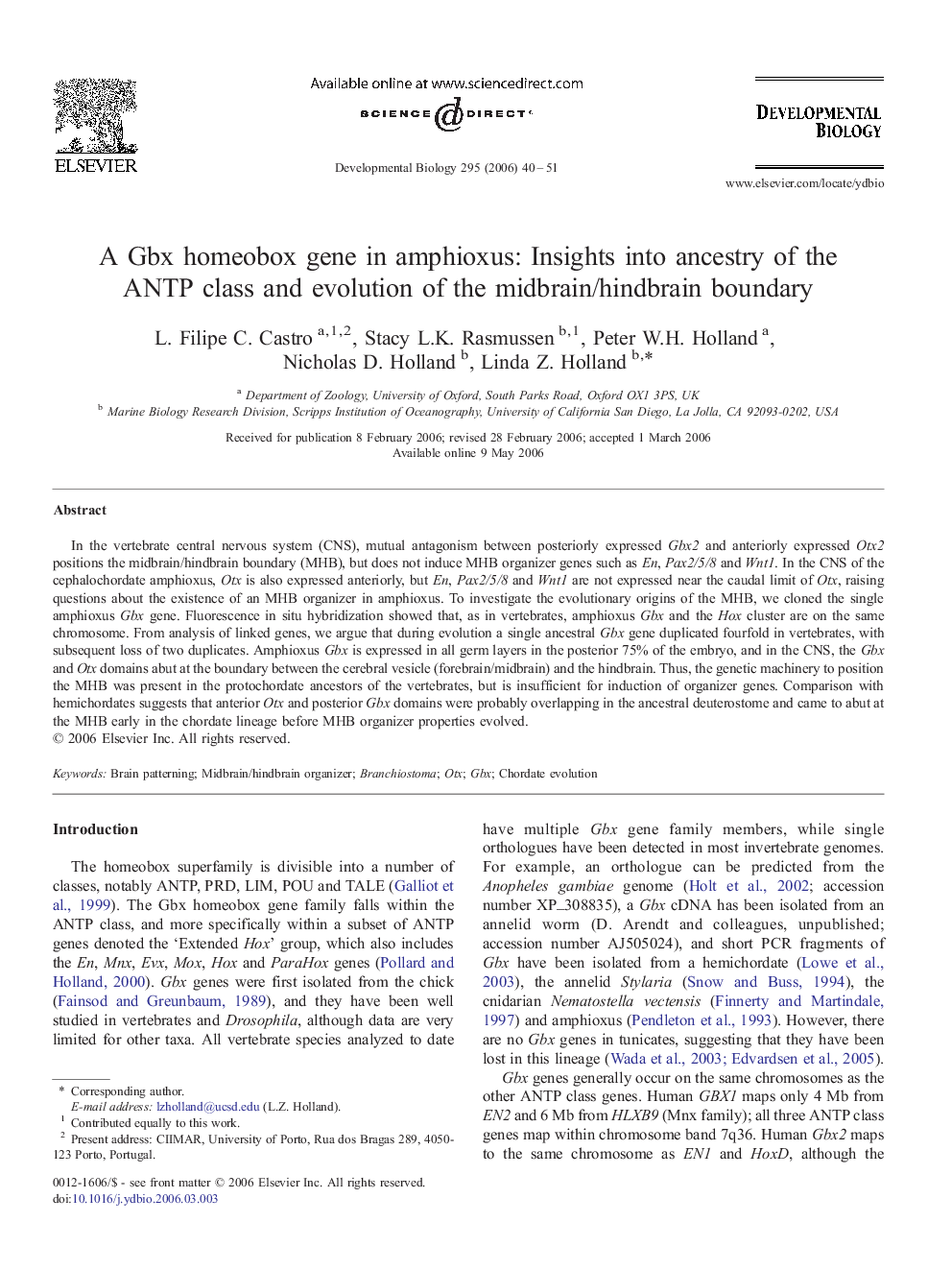| Article ID | Journal | Published Year | Pages | File Type |
|---|---|---|---|---|
| 2175881 | Developmental Biology | 2006 | 12 Pages |
In the vertebrate central nervous system (CNS), mutual antagonism between posteriorly expressed Gbx2 and anteriorly expressed Otx2 positions the midbrain/hindbrain boundary (MHB), but does not induce MHB organizer genes such as En, Pax2/5/8 and Wnt1. In the CNS of the cephalochordate amphioxus, Otx is also expressed anteriorly, but En, Pax2/5/8 and Wnt1 are not expressed near the caudal limit of Otx, raising questions about the existence of an MHB organizer in amphioxus. To investigate the evolutionary origins of the MHB, we cloned the single amphioxus Gbx gene. Fluorescence in situ hybridization showed that, as in vertebrates, amphioxus Gbx and the Hox cluster are on the same chromosome. From analysis of linked genes, we argue that during evolution a single ancestral Gbx gene duplicated fourfold in vertebrates, with subsequent loss of two duplicates. Amphioxus Gbx is expressed in all germ layers in the posterior 75% of the embryo, and in the CNS, the Gbx and Otx domains abut at the boundary between the cerebral vesicle (forebrain/midbrain) and the hindbrain. Thus, the genetic machinery to position the MHB was present in the protochordate ancestors of the vertebrates, but is insufficient for induction of organizer genes. Comparison with hemichordates suggests that anterior Otx and posterior Gbx domains were probably overlapping in the ancestral deuterostome and came to abut at the MHB early in the chordate lineage before MHB organizer properties evolved.
